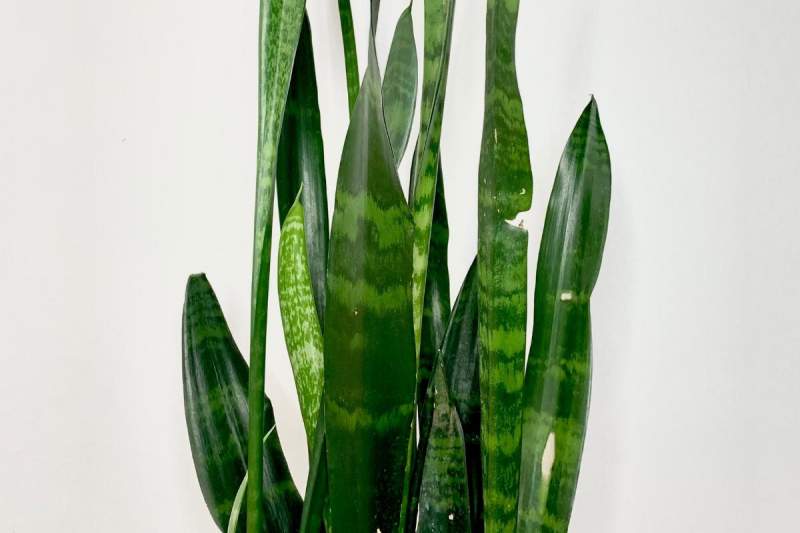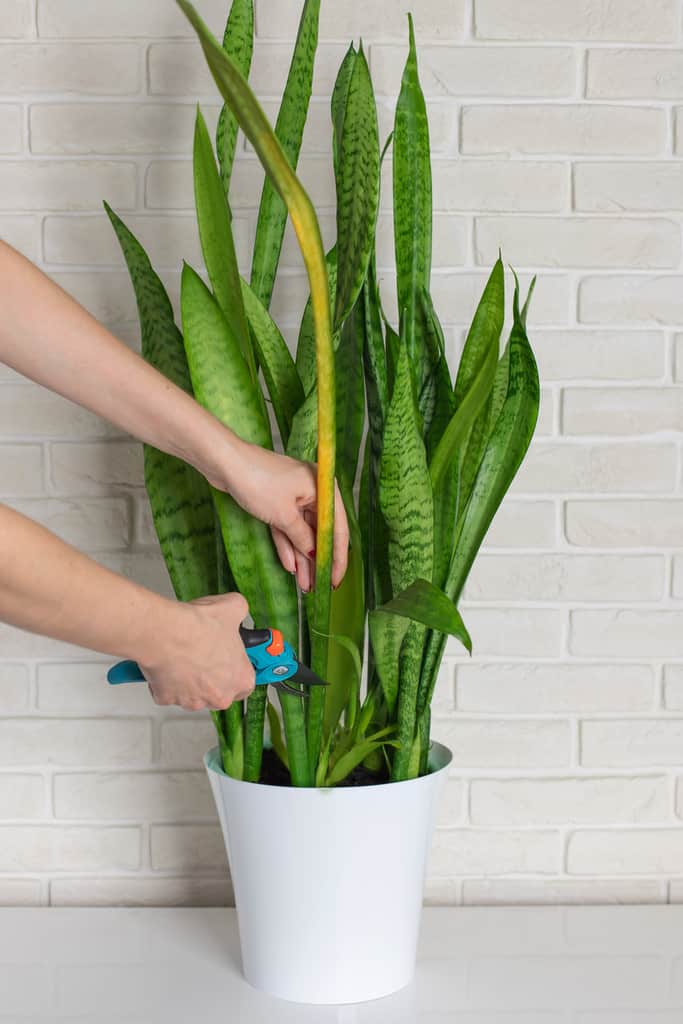The Only Guide for Snake Plant Leaves Turning Yellow
Table of ContentsSnake Plant Leaves Turning Yellow Can Be Fun For EveryoneFacts About Snake Plant Leaves Turning Yellow RevealedSnake Plant Leaves Turning Yellow Can Be Fun For EveryoneThe Main Principles Of Snake Plant Leaves Turning Yellow Not known Incorrect Statements About Snake Plant Leaves Turning Yellow Top Guidelines Of Snake Plant Leaves Turning Yellow

Ideally, you ought to include a fluid fertilizer to the plant's water. It is far better to give snake plants as well little fertilizer as opposed to also much. Do not fertilize snake plants in the winter. Repotting Flat pots with wide diameters are optimal for Sansevieria, as the plants create thick rhizomes that spread flat simply under the surface area of the soil.
This is just required when the plants are totally rooted via, if the rhizomes push one an additional up out of the soil or grow over the rim of the pot. Some fallen leaves might fall away over the sides on tall houseplants as the root is not completely secured in the dirt.

The Ultimate Guide To Snake Plant Leaves Turning Yellow
One particularly quite variant of the easy-care residence plant is the follower snake plant (Sansevieria zeylanica). Propagating snake plants The green-leaved snake plant can be very easily propagated in the springtime or summer via cuttings roughly 1.
You need to note when propagating the snake plant which cut side belongs at the leading and which at the base! Only then should the leafed items be planted in moist substrate.
Shorten the fallen leaves of long-leafed selections by about fifty percent so that the plant is steady in the pot. Illness and Bugs The snake plant is a very robust plant even with modest treatment and in sub-optimal conditions; it also forgives significant care errors.
Brown tinted or limp leaves are typically brought on by root rot, waterlogging or temperatures that are also reduced. The most regular parasites on snake plants are mealybugs. The plants are also occasionally ravaged with spider mites when they remain in dry, warmed air.
The Of Snake Plant Leaves Turning Yellow
Sansevieria, Mother-in-Law's Tongue, Viper's Bowstring Hemp. There are various sorts of Snake plant which all need the exact same care: Serpent plant moonshine Snake plant Victoria Snake Plant kingdom can live in low light to intense, straight sunlight (Snake Plant Leaves Turning Yellow). They're the perfect plant to bring life to a dark area or corner
During the cold weather do not hesitate to just water your serpent plant as soon as a month if the dirt is still wet after 2 weeks. Serpent Plants do not have any type of particular humidity demands however they favor drier atmospheres. Snake Plant kingdoms do not have any kind of particular temperature level demands, however will certainly experience if subjected to temperature levels listed below 10C.
Its slow growth price makes it fairly rare in the trade. There are two almost the same forms, among which is'Nelsonii'.'Nelsonii 'circulates true to type from leaf cuttings while the other type, additionally sold as'Nelsonii', need to be propagated by root division because leaf cuttings generate S. trifasciata.
Collecting bed-grown sansevieria is a selective thinning procedure. Single rosettes of wanted size are severed from the remaining glob by hand with a weeding blade or similar reducing tool, and lifted from the bed. Fully effective beds are harvested 5 to 6 times each year to avoid crowding of young plants which misshapes brand-new rosettes.
Snake Plant Leaves Turning Yellow Can Be Fun For Anyone
Sandy area dirts made use of for ground beds ought to be modified with 15 to 20 percent peat incorporated into the top 4 inches to boost water holding and cation exchange capacity. The p, H of many sandy ground beds in central Florida varieties between 5. 5 and 6. 8. Research study has revealed that S.
29 extra pound per plant. Nonvariegated plants are typically more productive than variegated cultivars of the exact same species. Some blog nurseries grow little plants from fallen leave cuttings in either ground beds or increased benches - Snake Plant Leaves Turning Yellow. Leaf cuttings of nonvariegated cultivars are usually stuck in early springtime and produce little plants in fall under shadehouse conditions.
5 inches right into a well drained pipes but wet tool. Considering that the top and basal end of cuttings drawn from the mid-section of taller types is challenging to establish visually, it is commonly preferable to mark or notch one end of the cuttings continually to help in sticking. Cuttings stuck upside down will not create roots.
8 Simple Techniques For Snake Plant Leaves Turning Yellow
Origin and shoot development happens a lot more slowly at reduced temperature levels; temperature levels listed below 60F should be stayed clear of. Relying on cultivar, cutting dimension, area of fallen leave used, and its physiological conditions, fallen leave cuttings will typically create 1 to 5 plantlets. Plantlets should be damaged or reduced from the fallen leave reducing when they reach the wanted sized.
10 to 12 plant food applications each year to supply beds under area problems or under frameworks will maintain ample fertility, plant vigor, and high quality. Nitrogen is one of the most essential component in a lot of nurseries in regards to restricting the price of plant development. Stock beds ought to obtain 500 to 750 extra pounds per acre each of nitrogen (N) and potash (K2O).
Serpent plants are a great addition to any home. If you have actually got one and you observe that the fallen leaves of your snake plant are splitting, don't stress!
Signs include plants that do not get enough water or plants that are over-watered. Plants that don't get enough water will have dry leaves and stems, with useful link big spaces between the split locations of their fallen leaves. Over-watered plants will certainly have soft and saggy stems, as well as white areas on the bottom of the leaf.
Little Known Questions About Snake Plant Leaves Turning Yellow.
If your snake plant's fallen leaves are breaking, it might be because of overwatering. When you sprinkle your serpent plant, you want to prevent soaking the soil so it stays moist but not soaked. If you water frequently or way too much, after that the soil can more helpful hints come to be too damp and will certainly not take in wetness as conveniently when sprinkled once again.